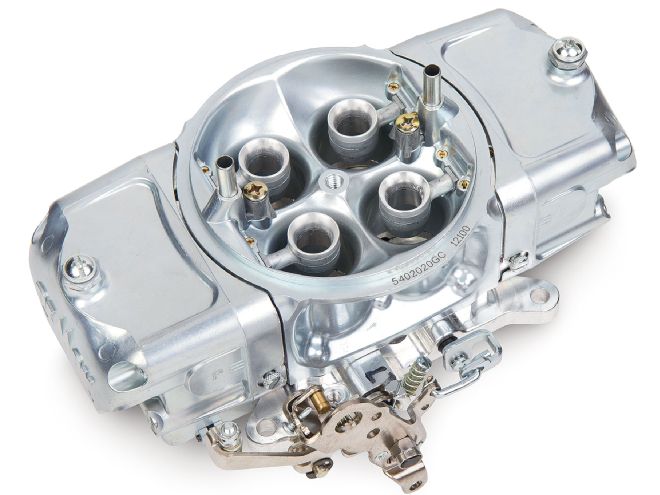
The horsepower race on the street is escalating. It wasn't all that long ago that a 400hp street motor commanded respect. Today, the LS3 that comes in the new Camaro makes 426 hp, so you've got to up your game. A quick way to do that is with a bolt-on supercharger. While there will always be a place for a giant 8-71 blower and two carburetors poking up through the hood, today's sophisticated street car is more likely to be sporting a centrifugal supercharger that fits stealthily under a stock hood. These centrifugal blowers can easily be combined with a carburetor. In fact, PHR has lined up a TorqStorm supercharger for a '70 Nova test and that called for a specific carburetor—a Mighty Demon blow-through carburetor.
Since not a lot is generally known about blow-through carbs, we thought it would be a good idea to illustrate a few features and detail the requirements. Demon, it turns out, is one of the few companies that makes carburetors specifically for blow-through boosted applications, and their Mighty Demon line encompasses blow-through models in 650-, 750-, and 850-cfm versions. And while you certainly can hack a normally aspirated carburetor to work in a blow-through application if you know your way around high-speed bleeds, emulsion bleeds, power valve channel restrictors, and the subtle nuances of the main metering circuit, this is a black art when it comes to balancing all these circuits when the boost comes up. The smarter approach is to choose a carburetor that is intended to work on the street when the boost pressure is bearing down on those venturis.
The most important feature that we've encountered with blow-through carburetors has little to do with moving air—that's the supercharger's job. The blow-through carburetor's foremost job is matching enough fuel with the large volume of pressurized air passing through the carburetor. In our experience, standard downleg or straight-leg boosters can be made to flow sufficient fuel, but in doing so, the modifications make the carburetor extremely rich under part-throttle conditions. By using a slightly smaller cfm-sized carburetor and annual discharge boosters, the carburetor can flow more than enough fuel to create the proper air/fuel ratio and avoid running overly rich at part throttle. And let's face it, for a street car, your engine will spend far more time at part throttle than it ever will at full boost. So with this concept established, let's take a look at what secrets we can discover inside a Mighty Demon blow-through carburetor.
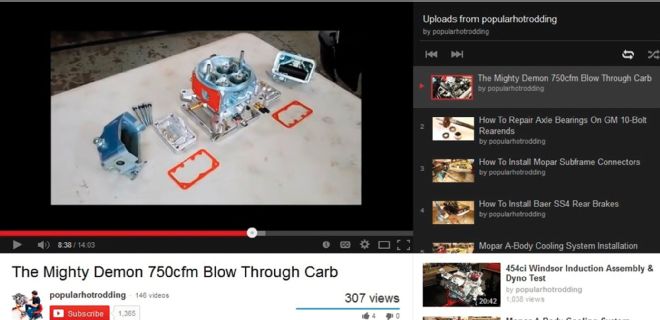
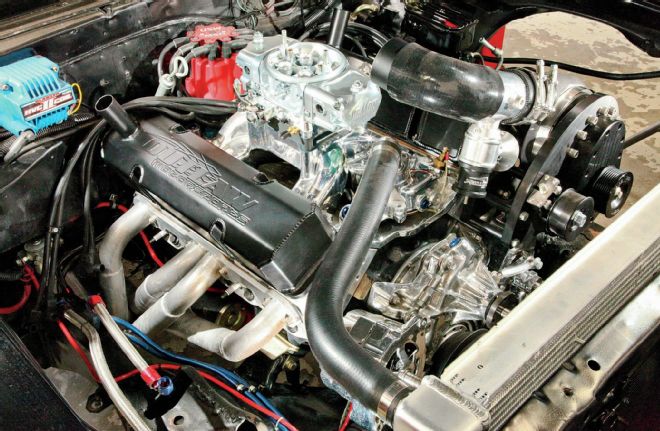 It almost sounds too simple, but just bolt on this Mighty Demon blow-through carburetor, hook the discharge outlet from the blower to the carburetor, bolt down the hat to seal the boost pressure into the carburetor, boost-reference the fuel pressure, and you’re ready to go.
It almost sounds too simple, but just bolt on this Mighty Demon blow-through carburetor, hook the discharge outlet from the blower to the carburetor, bolt down the hat to seal the boost pressure into the carburetor, boost-reference the fuel pressure, and you’re ready to go.
It almost sounds too simple, but just bolt on this Mighty Demon blow-through carburetor, hook the discharge outlet from the blower to the carburetor, bolt down the hat to seal the boost pressure into the carburetor, boost-reference the fuel pressure, and you're ready to go.
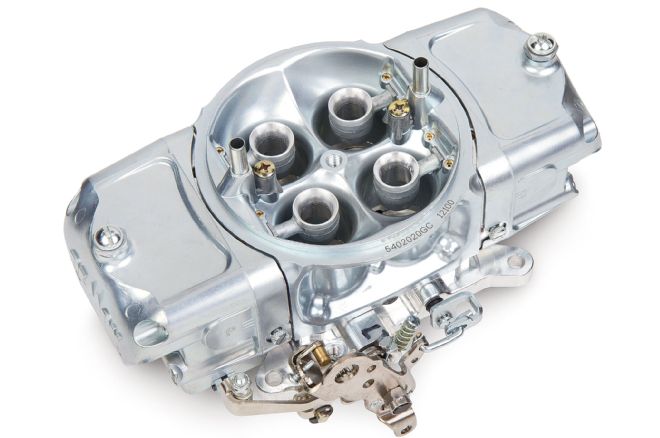
This is the Mighty Demon blow-through carburetor we'll be detailing (PN 5402020 BT, $674.95, Summit Racing). This is a mechanical secondary carburetor with perhaps its most notable feature being the annual discharge boosters and its combination of billet aluminum and cast zinc construction.
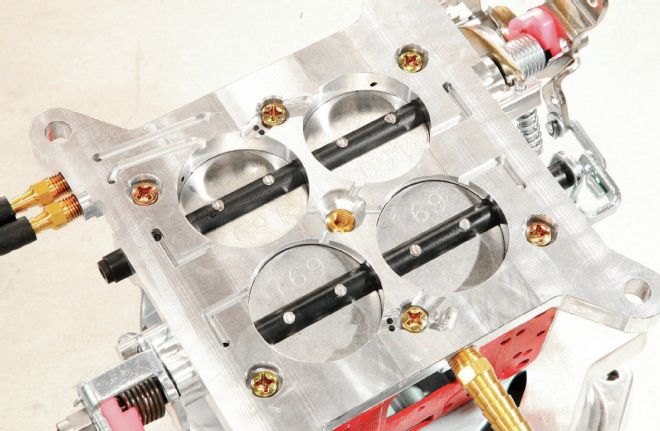
This is the manifold side of the Mighty Demon baseplate where you can see the brass idle bypass valve in the center. Also notice the four L-shaped slots cut into the baseplate near each throttle blade. These slots pressure balance the throttle shaft seals so that boost pressure does not push air and fuel out past the throttle shafts. This is a big problem with regular carburetors used in blow-through applications.
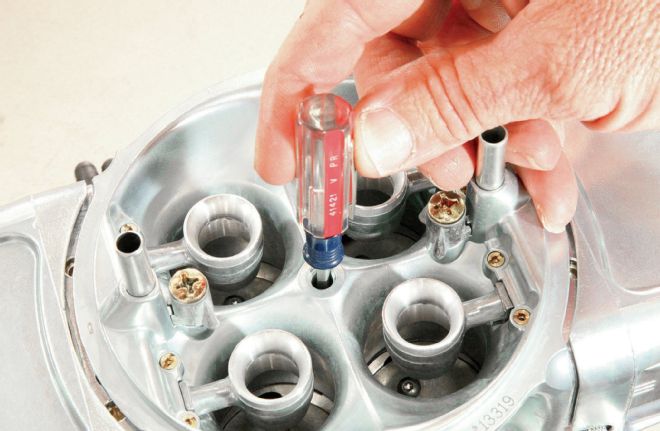
Among the great features of this carburetor is what Demon calls Idle-Eze. This screwdriver adjusts an idle air bypass valve located in the baseplate that allows the tuner to adjust the idle speed without having to radically change the throttle plates in relation to the transfer slot. This eliminates the need to drill large holes in the throttle plates.
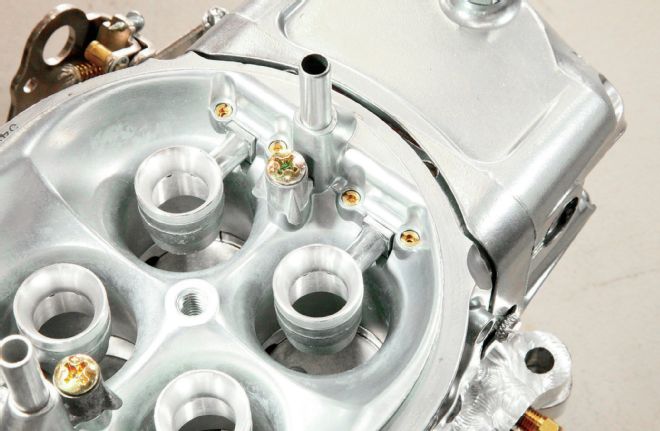
In this overhead view, you can just see the multiple outlets in the annular discharge boosters that do a great job of atomizing the fuel into the booster in multiple streams instead of one large one. Other Mighty Demon details include replaceable high-speed (inner) and idle (outer) air bleeds. With the radiused inlet and no choke housing, this makes changing the accelerator pump nozzles very easy.
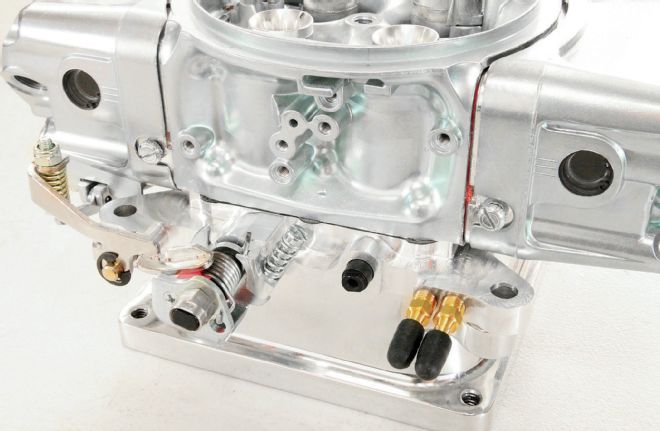
All Mighty Demon carbs offer even idle mixture distribution with four separate idle mixture screws. Another handy tuning option is the secondary idle speed stop. You can also see the large glass fuel level windows that make setting the float level very easy.
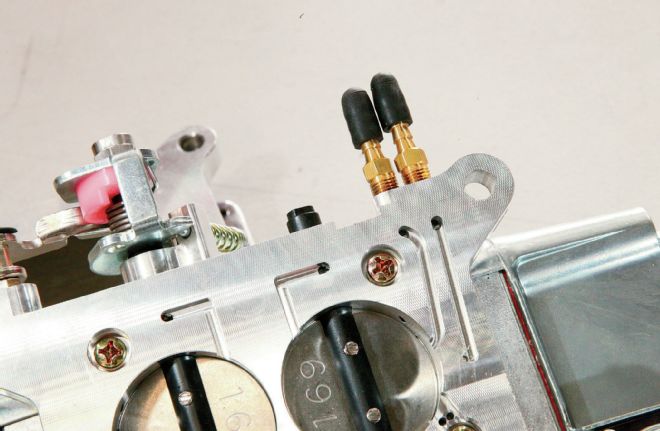
The Mighty Demon (blow-through and naturally aspirated) is really a great combination of race and street carburetor features. What makes this a street-friendly carb is the combination of ported and manifold vacuum outlets. Note how the inboard nipple is linked to the throttle bore and direct manifold vacuum while the outboard nipple channel runs up into the main body of the carburetor for ported vacuum. This is useful for vacuum advance cans where vacuum is eliminated at idle.
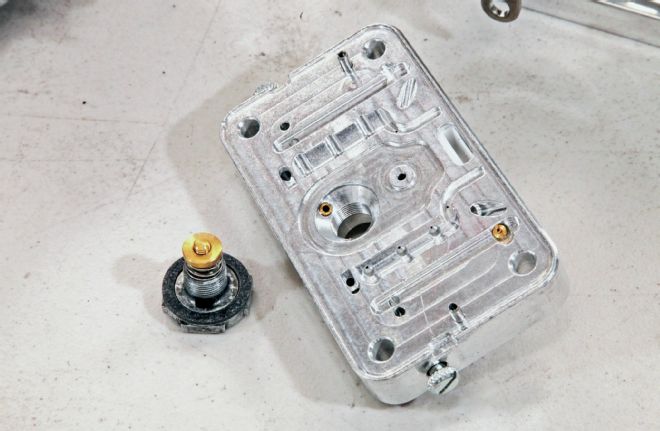
Disassembling the Mighty Demon is easy. With eight Allen screws, the float bowls can be removed giving you access to the main metering blocks, main jets, power valve (on the primary side), and the idle feed restrictor.
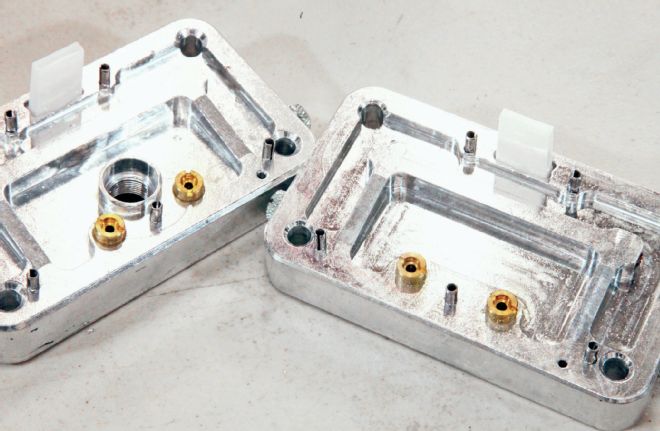
Billet aluminum metering plates are precision drilled instead of cast in place, creating more accurate metering characteristics. (An irregular shape in the main metering can negatively affect the fuel curve.)

We've removed the power valve from the billet primary metering block so you can see the power valve channel restrictor. Most street carburetors use a pressed-in restrictor but the Mighty Demon offers a screw-in bleed that can be easily changed. This allows you to increase or decrease the amount of fuel delivered to the engine when the power valve opens. In the upper righthand corner you can see the screw-in idle feed restrictor.
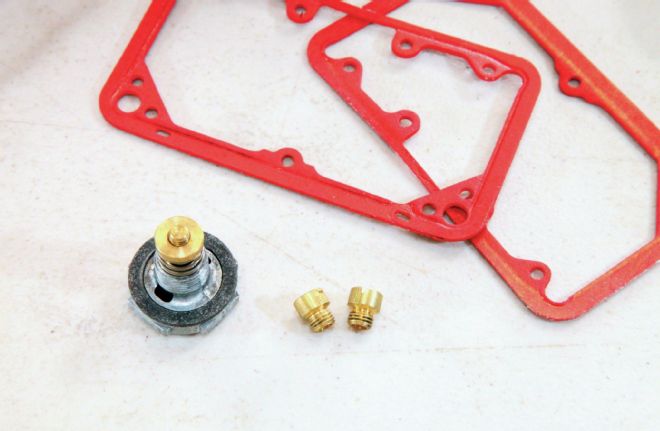
While the Mighty Demon looks different than a Holley, it uses all standard Holley replacement style parts including jets, accelerator pump nozzles, power valves, and gaskets. This makes servicing the Mighty Demon very easy.
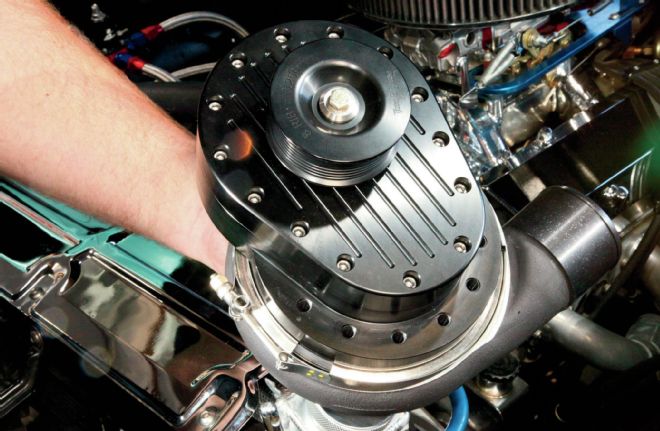
We're going to find out how well our blow-through Demon 750 works when we pair it with this sweet TorqStorm centrifugal supercharger. Some of its cool features include a CNC-machined billet impeller, housing, and cover, a ceramic bearing system, a V-band style compressor-to-housing clamp for easy clocking, and a self-contained oil supply. We'll be putting it to the test on a warmed-over hydraulic-roller-cam 400ci small-block Chevy soon!